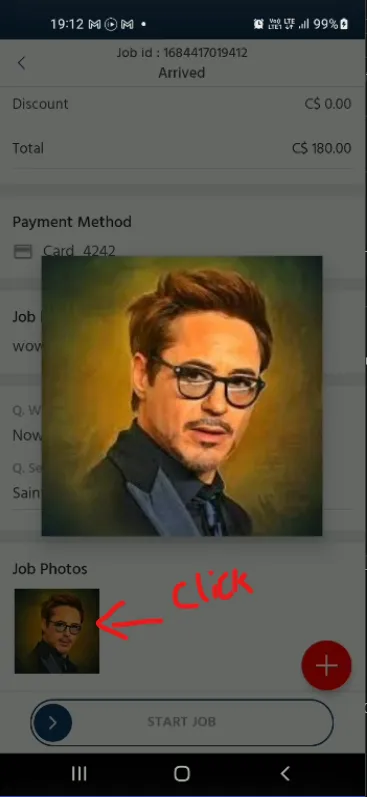在Android应用程序中,是否可能只弹出/显示一张图片?类似于覆盖AlertDialog的常规视图,以便它仅包含一张图片而没有其他内容。
解决方案:通过@blessenm的帮助,我找到了答案。将活动掩盖为对话框似乎是理想的方法。以下是我使用的代码。可以按照启动新活动的方式随时调用此对话框样式的活动。
ImageDialog.java
public class ImageDialog extends Activity {
private ImageView mDialog;
@Override
protected void onCreate(Bundle savedInstanceState) {
super.onCreate(savedInstanceState);
setContentView(R.layout.your_dialog_layout);
mDialog = (ImageView)findViewById(R.id.your_image);
mDialog.setClickable(true);
//finish the activity (dismiss the image dialog) if the user clicks
//anywhere on the image
mDialog.setOnClickListener(new OnClickListener() {
@Override
public void onClick(View v) {
finish();
}
});
}
}
your_dialog_layout.xml
的翻译是:你的对话框布局文件.xml
<?xml version="1.0" encoding="UTF-8"?>
<FrameLayout xmlns:android="http://schemas.android.com/apk/res/android"
android:id="@+id/image_dialog_root"
android:layout_width="wrap_content"
android:layout_height="wrap_content"
android:background="@android:color/transparent"
android:gravity = "center">
<ImageView
android:id="@+id/your_image"
android:layout_width="wrap_content"
android:layout_height="wrap_content"
android:src = "@drawable/your_image_drawable"/>
</FrameLayout>
为了实现这一点,您必须设置以下活动的样式:
styles.xml
<style name="myDialogTheme" parent="@android:style/Theme.Dialog">
<item name="android:windowNoTitle">true</item>
<item name="android:windowFrame">@null</item>
<item name="android:background">@android:color/transparent</item>
<item name="android:windowBackground">@android:color/transparent</item>
<item name="android:windowIsFloating">true</item>
<item name="android:backgroundDimEnabled">false</item>
<item name="android:windowContentOverlay">@null</item>
</style>
最后一步是在清单文件中声明该样式的 Activity:
<activity android:name=".ImageDialog" android:theme="@style/myDialogTheme" />

PopupWindow或者自己编写自定义视图。 - Abhijit